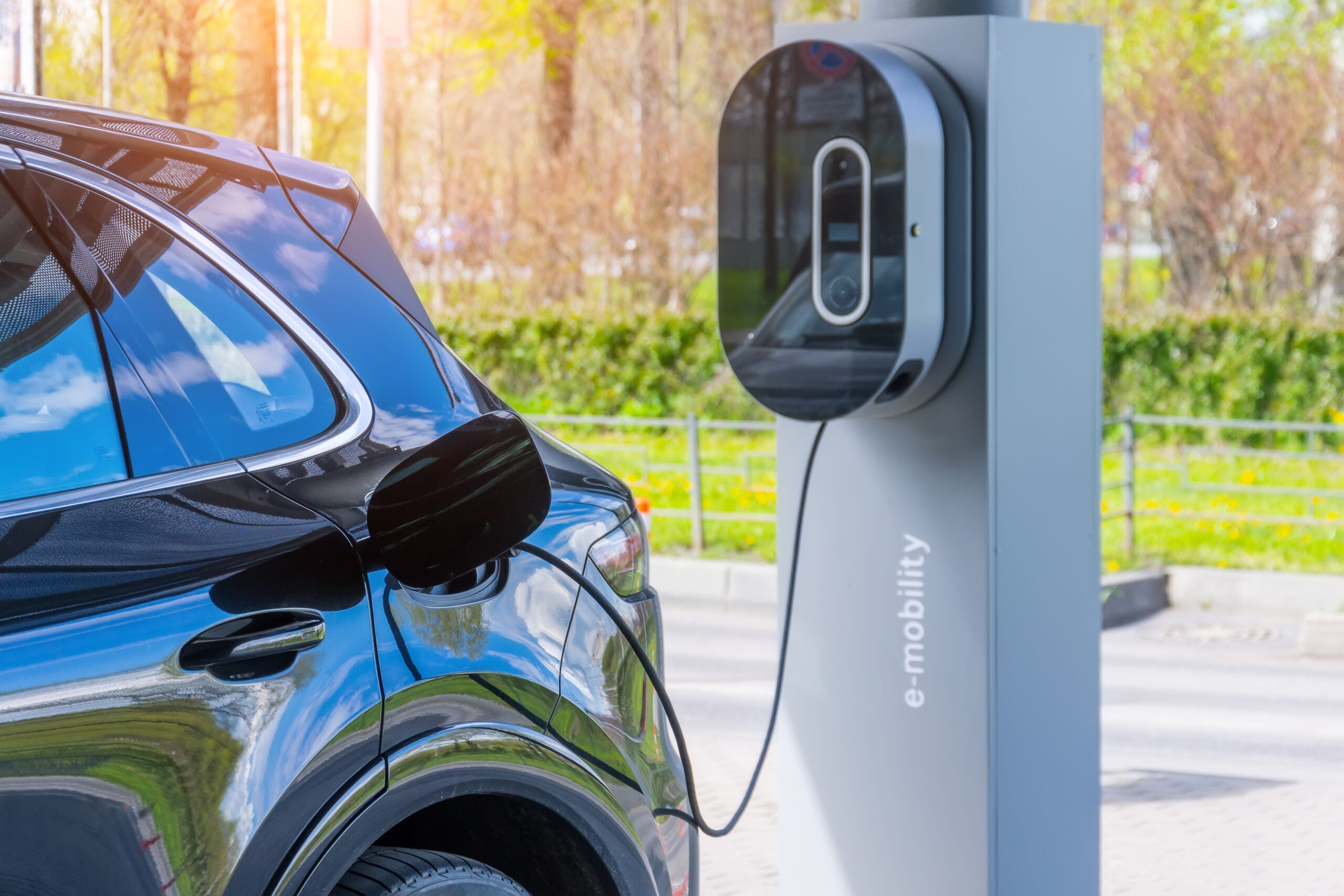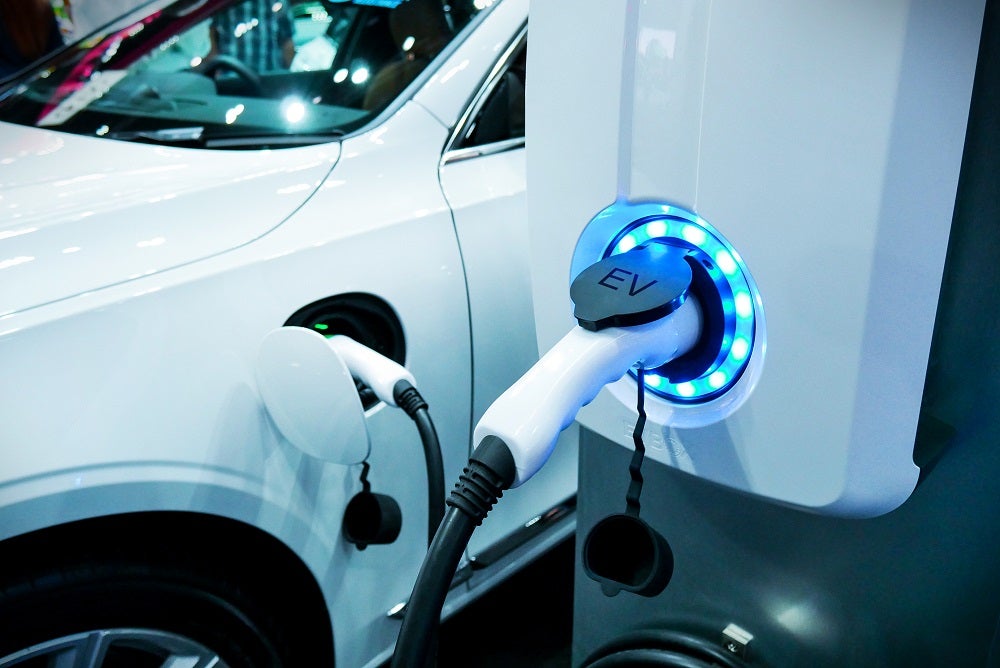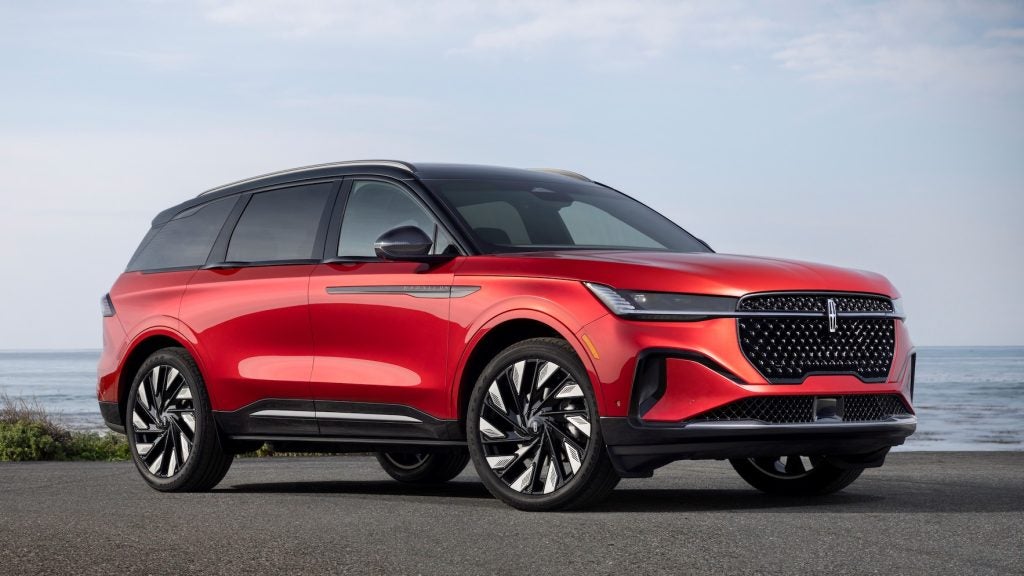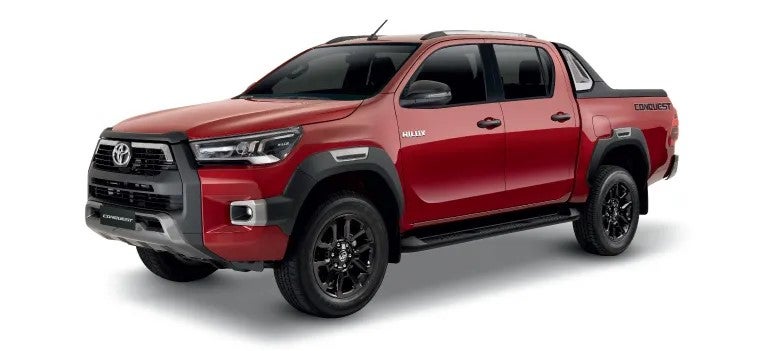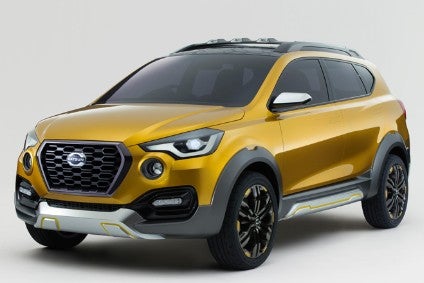
Future models for the three brands of Nissan Motor are the latest to be explored in just-auto’s ongoing series. Datsun comes first, to be followed by Infiniti, and then, a two-part look at Nissan.
Nissan’s Dacia?
How well do you really know your competitors?
Access the most comprehensive Company Profiles on the market, powered by GlobalData. Save hours of research. Gain competitive edge.

Thank you!
Your download email will arrive shortly
Not ready to buy yet? Download a free sample
We are confident about the unique quality of our Company Profiles. However, we want you to make the most beneficial decision for your business, so we offer a free sample that you can download by submitting the below form
By GlobalDataNissan Motor announced its intention to revive the Datsun brand in March 2012. The aim was to create an equivalent to Groupe Renault’s success with Dacia though Datsun has to date only been offered in low to medium income markets.
The first countries were India, Indonesia, Russia and South Africa, sales commencing from early 2014. Since that time, the brand has been rolled out to Sri Lanka, Nepal, Kazakhstan, Belarus and most recently, Lebanon. Mexico might well be a future production and sales location, with exports to South America possible too.
Global brand but not global models
The model range consists of four vehicles, with a fifth to be added later in 2017. Not all cars are available in every country.
Much was expected ahead of the brand’s roll out to the Indian market. Thus far, the experience has been a mixed one. While Datsun cars account for the majority of Nissan Motor’s sales in the country, the original sales target has turned out to be wildly unrealistic. The goal was to deliver 200,000 vehicles in the three years to end of fiscal 2017 but the reality will come in at around the 80,000 units level. Worldwide, some 250,000 cars have so far been sold.
Vincent Cobee, who heads up Datsun at a global level, recently stated in an interview with an Indian newspaper that he still sees big potential for the brand locally. By 2020, Cobee is hopeful that Datsun, which manufactures models at the Renault-Nissan Alliance’s Oragadam plant in Tamil Nadu, will be selling 125,000 vehicles a year.
What’s holding back sales?
One of the issues with Datsun models in India has been the lack of automatic transmission availability as well as connectivity features which are somewhat less than state of the art. In short, customer expectations have outpaced what Nissan expected. Nissan has vowed to continually upgrade Datsun’s existing models, but it must be careful not to lift prices too much in the process, given just how much that issue matters.
Ironically, one of the biggest headaches for Datsun’s Indian market operations is competition from Renault. The Kwid, an A segment crossover, is the reason why the French brand ended 2016 fewer than 2,000 units behind Toyota and in seventh place in the sales charts, way ahead of Ford, Volkswagen and…Datsun (38,014). Of the 132,235 Renaults registered last year, 105,745 were Kwids. By way of comparison, the best selling Datsun model was the redi-GO, with 20,114 deliveries. This was followed by the GO (9,964) and GO+ (7,926).
The global line-up: four models, with a fifth on the way
The GO-cross is clearly needed sooner rather than later in Datsun’s best market. In common with the existing three locally-built models (and the Renault Kwid), this A segment crossover will be based on the Alliance’s CMF-A architecture. The cross’ development code is said to be EM2. Nissan India had reportedly not been planning on adding this model until 2019 but the success of the Kwid is said to have seen the project fast-tracked. It should now reach the market during the second half of 2017.
The redi-GO, which was only released on the Indian market in June 2016, is clearly off to a good start. The model name of this small, five-door hatchback was originally applied to a concept which debuted at the Delhi motor show in February 2014. The production car, revealed in India in April 2016, looks very similar to the concept. The sole engine is Renault-Nissan’s BR8 series 800cc petrol unit and the only transmission a five-speed manual gearbox.
The 3,430mm long redi-GO is built on the same production line as the (3,679mm long) Kwid. The next mechanical news for this car should be the addition of the Alliance’s BR10 1.0-litre petrol engine. A five-speed automated manual transmission may also be offered. These updates could come ahead of a scheduled facelift due for the fourth quarter of 2020. The second generation model is expected in the second or third quarters of 2023.
Datsun’s first car of the modern era was the GO, this small hatchback being revealed to the media in July 2013. Build commenced on Line 2 at the Renault Nissan Alliance plant (RNAIPL) in Oragadam, near Chennai in February 2014. Sales in the Indian market followed a month later. There, the GO is a rival for the Maruti Suzuki Wagon R.
This little car was designed with a low price as one of the highest priorities. This can be seen in things such as thin doors, a one-piece rear seat, a single-arm wiper, and an under-dash hand brake.
Indonesia
Nissan also builds the GO and the minivan variant, the GO+ at an expanded Cikampek plant in Indonesia. The GO+ had its press and public debuts at the Jakarta motor show in September 2013. Production commenced in April 2014. Indian build of the + followed in January 2015.
At the inauguration of the new plant, Nissan Motor Indonesia also announced that its participation in the Low Cost Green Car had been authorised by the government. Following the requirements of the initiative, the official name of the Datsun brand is Datsun Nusantara, with Datsun GO+ Panca as the model’s official name. The word “Panca” is derived from global naming of the GO: ‘five’ in Japanese, with Panca also meaning ‘five’ in Bahasa Indonesia. The ‘+’ in the name Datsun GO+ is, Nissan says, reflective of the extra space in the third row for either passengers or luggage which allows the 5+2 MPV to accommodate two extra occupants.
The GO+ has the same 2,450mm wheelbase as the GO but as it is a 5+2 seater, it is 21cm longer. The standard engine for both cars is a 1.2-litre petrol unit.
Unlike the GO models, the two ‘DO’ models which are made in Russia use the Alliance’s B-Zero platform.
Russia
The first model in the DO series was the on-DO, a B segment/Sub-compact sedan. Nissan revealed this small car, which was developed especially for Russia, in April 2014. Production commenced three months later and sales began shortly after a public debut at the Moscow motor show in August of that year. The on-DO looks very similar to the Lada Granta.
This was the first Datsun to be manufactured in Russia, build taking place within the AvtoVAZ works in Togliatti. Like the Granta, which is built in the same production complex, this small sedan is closely related to the first generation Dacia/Renault Logan.
The on-DO is made on the same production line as the Lada Granta and Lada Kalina. There should be a facelift for the Datsun in 2018 and a replacement in 2021. This future car should change platforms to CMF-A, although there is a chance that a lower cost version of CMF-B could be engineered by Nissan.
The mi-DO is a hatchback version of the on-DO and is built on the same line as that car and the equivalent Ladas. Although introduced at the Moscow motor show in August 2014, deliveries did not begin until the first quarter of 2015. Like the on-DO, it is based on the first generation Dacia Logan’s platform which itself was developed from the second generation Renault Clio’s architecture.
Both the on-DO and mi-DO have a 2,476mm wheelbase, are 1,500mm tall and 1,700mm wide, but the mi-DO is 3,950mm long compared to the on-DO at 4,337mm. Power comes from a 87hp version of a 1.6-litre 8v engine, while a four-speed automatic transmission is optionally available in place of the standard five speed manual transmission. There should be a mid-life styling update in 2018 and a replacement model in 2022.
Last year wasn’t a good one for Datsun in Russia, the brand suffering a 41 per cent collapse, deliveries plunging to just 18,772 cars. That placed the brand in 18th position behind Audi but ahead of Lifan. The overall market was down by 11 per cent.
Datsun needs more products and at least one SUV could greatly help matters. Witness the success of the Renault Duster, deliveries of which were up slightly in the declining market, at 44,001 units. The obvious solution would be to give the brand a rebodied Lada X-RAY.
Summary
Nissan was unlucky with Datsun in Russia, rolling out the brand not too long before the market headed into a steep decline. Yet right now, what it needs is additional models so as to be able to build up a good image and benefit from what looks like the start of a recovery. If that happens, this could well become an important future market.
As for Indonesia, volumes are modest there too. Last year, the GO and Go+Panca achieved combined sales of 25,483 (+2.4 per cent) in a year when the total market rose by five per cent to 1,061,015 passenger vehicles. What is needed to hit the big time there, is a range of B and C segment SUVs, as well as a larger minivan. Until that happens, Datsun will remain very much in the shadow of the dominant players: Toyota, Daihatsu and Honda.
What of India? This could well be the country where Datsun has the best opportunity, especially if analysts who see a five million plus market by 2020 are proved correct. Yet to really benefit from such a situation, Renault-Nissan should be making plans to expand its manufacturing capacity in the country’s south. That way, Datsun can take on a new role where it offers a whole range of small SUVs, crossovers, sedans and hatchbacks for the Indian market and, as is already happening in modest volumes, becomes a feeder brand for Nissan in multiple other countries.
Future model plan reports for other manufacturers can be viewed in the OEM product strategy summaries section of just-auto.com.
Future product program intelligence
More data on vehicle lifetime and future product plans is available in PLDB from QUBE.


